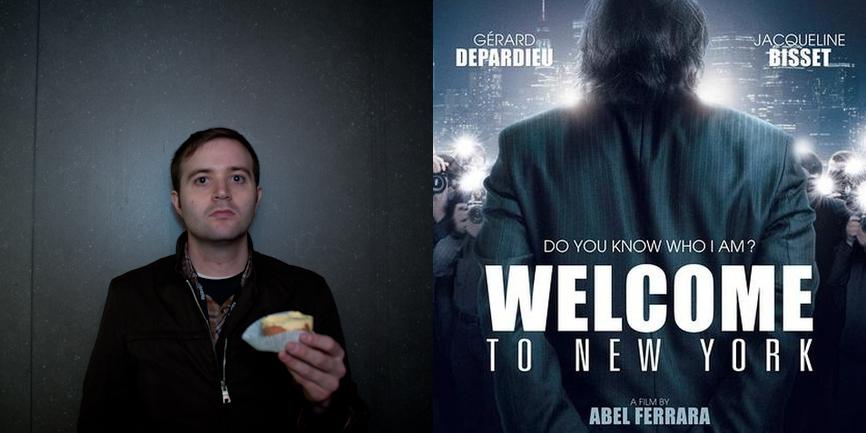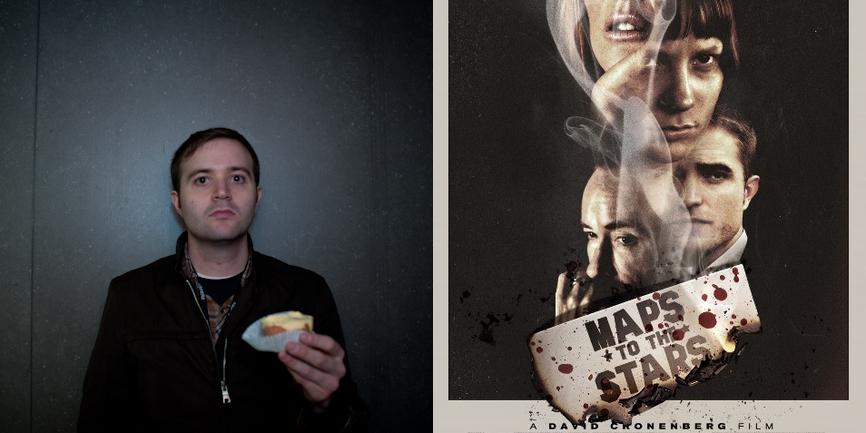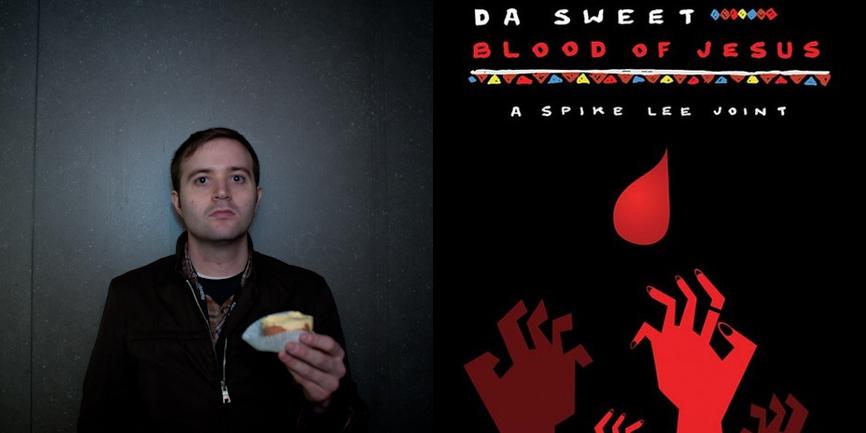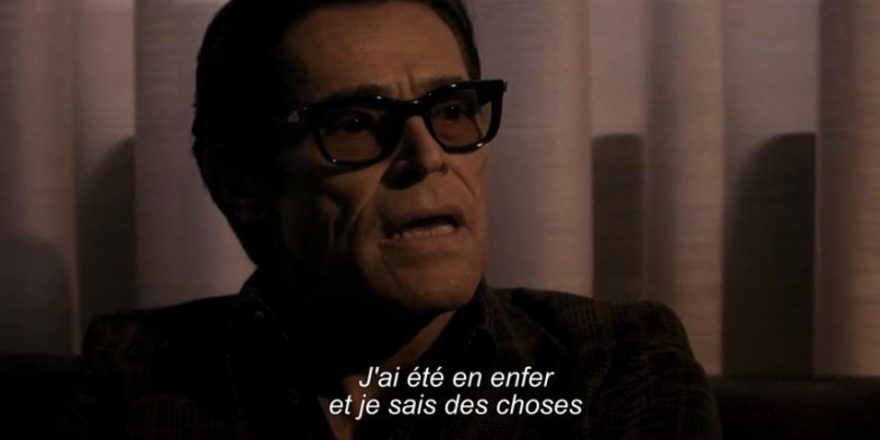“I don’t like politicians. I hate them,” says Gérard Depardieu, appearing as himself, out of character, at the beginning of the Abel Ferrara’s Welcome to New York. He’s answering questions about why he’s agreed to play a version of French politician and (alleged) rapist Dominique Strauss-Khan. Depardieu adds that he’s an anarchist, and then the credits start, scored with a throaty rendition of “America the Beautiful” that continues over a montage of various national monuments, gold bars and the printing of money. Ferrara has never been one for subtlety. If he has something to say, he says it and he says it loud. It’s no surprise, then, that the long-delayed release of a non-director-approved cut of Welcome to New York has led to the auteur terrible dropping F-bombs all over entertainment news.
The basic events behind the kerfuffle over Welcome to New York’s U.S. release aren’t that complicated. For anyone who’s interested, the most detailed account I’ve read is Screen Comment’s. In short, IFC Films’ contract required that the film’s producers at Wild Bunch deliver an R-rated cut, per a deal to air the movie on Showtime. That’s not a new or special request by any means. IFC says that Ferrara declined to be involved in creating the R-rated version. Again, not that hard to believe, since Ferrara is notoriously difficult and flat-out said, “I don’t make R-rated films” in a recent interview with The Dissolve. (And that’s just the tip of a solid-gold iceberg that includes, “Do you think I write for a fucking lawyer? I don’t write my shit for fucking nobody.”) Ferrara says the R-rated cut created by Wild Bunch for IFC butchers the movie. He’s right, too, and while it’s not a Brazil-level mangling, the Wild Bunch edit of Welcome to New York tinkers with things beyond just trimming for content. In addition to the film’s most publicly debated edit (the division of a rape scene in Ferrara’s version into two scenes in the R-rated cut, the abbreviated beginning of the assault and a subsequent flashback from the victim’s perspective), the revisions in the Wild Bunch version don’t tone down the film’s explicitness as much as they dilute its intent.
The plot is so simple it’s basically procedural. French diplomat Mr. Devereaux (Depardieu) arrives in the Big Apple. He attends a business meeting (which includes some prostitutes in the uncut version, and doesn’t include them in the R-rated cut). He goes to a hotel, and meets up with some colleagues and some more prostitutes. They have an orgy. After they leave, two more prostitutes come over and have a threesome with Devereaux. After they leave, a maid walks in on him mid-shower, and Devereaux responds by raping her while asking, “Do you know who I am?” He’s arrested while boarding his flight home to France, goes to jail, gets strip searched, calls his wife, eventually gets out on bail and moves into a fancy apartment under house arrest, and [SPOILER ALERT] gets off scot-free in the end because he’s a rich politician and that’s just what these guys do.
The scenes (especially in Ferrara’s cut) are long, sometimes uncomfortably so, but they lack the meandering quality that’s made other recent efforts from the director such tough sits (though I do have a soft spot for Go Go Tales). Their length focuses them, and continues the tone set by the opening credits, and the modus operandi for most of Ferrara’s career — an unflinching, but not necessarily unforgiving look at humanity at its most deplorable. In Ferrara’s best work, he can take you from disgust to empathy and back again, sometimes within a single shot, like the legendary Harvey Keitel full-frontal weeping scene in Bad Lieutenant. (Depardieu gets his own shot at the “full Keitel” in New York, in a prolonged strip-search scene where he lets his enormous gut symbolize the overindulgences of the one percent.) There are little trims for time everywhere in Wild Bunch’s cut, whose overall effect lessens the increasing sense of anxiety and claustrophobia we feel as we’re stuck with Devereaux, who doesn’t get any less detestable as the film goes on. We also lose a few instances of another Ferrara trademark, the unexpected moment of beauty — including an arresting, simple shot of one prostitute stepping onto the hotel balcony to watch the sunrise after a night of debauchery.
Abel Ferarra isn’t Zalman King, and the lengthy sex scenes that take up most of Welcome to New York’s first act aren’t photographed in soft focus or wandering close-ups. Even in Ferrara’s version, what’s seen is not especially graphic compared to other movies with bigger budgets and A-list American movie stars. There’s a brief glimpse of some dimly lit vaginas towards the end of the threesome scene, but that’s as bad as it gets. In Ferrara’s cut, he holds on these scenes until they become vile, consensual on the surface, at best. After the rape of the maid (and in a second rape scene that’s completely removed from the R-rated cut), we watch Deveraux’s labored breathing, and his calm, vaguely bored, reaction. In Ferrara’s version, the male characters treat women like objects. The R-rated version, which shortens the orgies with a series of slow dissolves, objectifies the female characters. There are ways to shave a few seconds out of these scenes and retain their effect, and unfortunately that’s not how they were re-edited. I guess orgies are OK on Showtime as long as they don’t make you too depressed? If your teenager was flipping channels on late-night TV and came across Welcome to New York, wouldn’t you rather he think Devereaux’s abominable, insatiable sexual appetite was deplorable and not in any way titillating?
I saw my first glimpse of real pornography when I was in sixth grade. I was sleeping over at my best friend Tony’s house when he produced a floppy disk that he’d snuck out of his older brother’s room. He popped it in the computer and an 8-bit menu slowly formed on the screen. If I remember correctly, it was a three-by-three grid of various penetration close-ups. At the center, in all caps, was the word “SCROT.” That was 1994. Things are different now. The internet exists. The amount of graphic sexual content available to the minors of the world is unquantifiable. (In my later teen years, a friend told me she caught her eight-year-old brother typing “porn.com” into the Internet Explorer search bar. That was 1998!) This stuff is everywhere, and it’s not hard to find. And if you like your sleaze dressed up as something more respectable, art movies with penetration aren’t very hard to find either. Netflix carries multiple versions of Lars von Trier’s Nymphomaniac on its streaming service. I just brought it up to make sure that the penetration scenes were still in it, and I literally went right to them. That’s how easy it is! You can also stream Gaspar Noé’s Irreversible, and in the past they’ve carried Caligula, Last Tango in Paris, Anatomy of Hell, Slaughtered Vomit Dolls and lots of other movies that are way more explicit than Welcome to New York. Here’s hoping, because it’s the year 2015, that we can legally see Ferrara’s version in the United States sometime in the near future.
But, also thanks to the internet, Ferrara’s cut is out there to be found right now. If the full version of Welcome to New York is bound for the cinematic orphanage (like Larry Clark’s only good movie, Ken Park), seeking it out via some torrent site might be your only hope to see it, and it’s a distribution method supported by Ferrara himself. Whatever higher power you happen to believe in, let’s all just say a little prayer that we won’t have to wait this long for Pasolini.
Full disclosure: IFC Films is releasing Wild Bunch’s R-rated edit of Welcome to New York in theaters and on VOD. They also released my most recent movie, White Reindeer, which also has an orgy scene.







